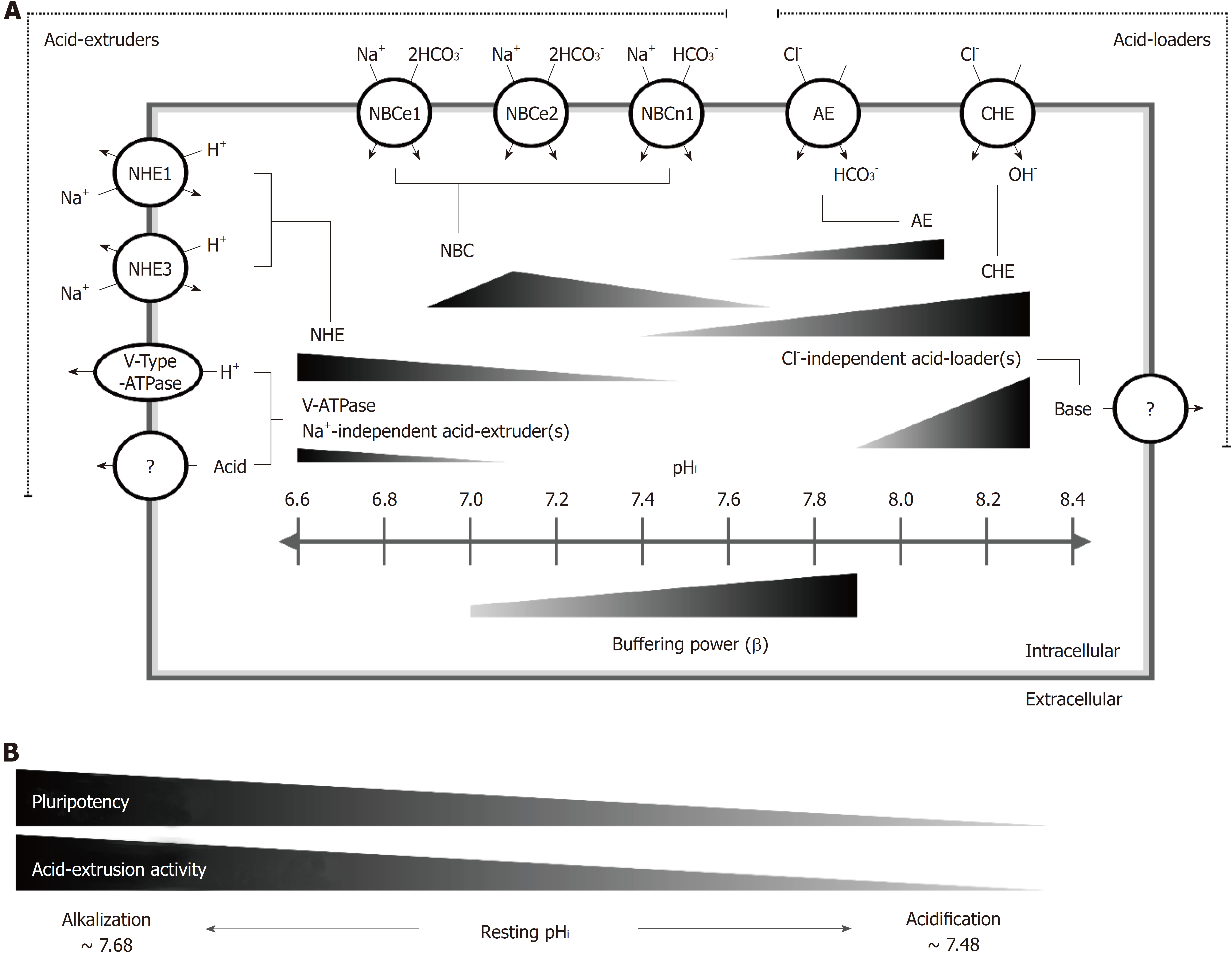Copyright
©The Author(s) 2018.
World J Stem Cells. Dec 26, 2018; 10(12): 196-211
Published online Dec 26, 2018. doi: 10.4252/wjsc.v10.i12.196
Published online Dec 26, 2018. doi: 10.4252/wjsc.v10.i12.196
Figure 7 Kinetic model of the pHi regulatory mechanism in human induced pluripotent stem cells.
A: A kinetic model illustrating the pHi regulatory mechanism in HPS0077 cell, including acid extrusion, acid loading and passive buffering power. For the first time, we demonstrated that the active membrane pHi regulators NHE1, NHE3, V-ATPase, NBCe1, NBCe2, NBCn1, AE and CHE functionally coexisted in hiPSCs, and in addition, unknown Na+-independent acid extruder(s) and Cl--independent acid loader(s) were also observed. The length of the triangle indicates the pHi range of pHi regulator activation, and the height indicates the magnitude of the pHi regulatory activity. For example, the NHE, NBC, AE and CHE were activated at pHi ≤ 7.5, between 6.9 and 7.68, ≥ 7.4 and between 7.6 and 8.1, respectively. The non-NHE acid extruders [V-ATPase, unknown Na+-independent acid extruder(s)] and unknown Cl--independent acid loader(s) were activated during extreme intracellular acidification, i.e., pHi < 7.1, and alkalization, i.e., pHi > 7.9, respectively. Moreover, the intracellular passive buffering capacity (β) increased as the pHi shifted to the alkalization direction; B: In the process of the loss of pluripotency, the activity of the acid extrusion mechanism gradually decreased, including the participation of at least the NHE, the NBC and V-ATPase, and resulted in the resting pHi shifting from 7.68 to 7.48. hiPSCs: Human induced pluripotent stem cells; NHE: The Na+/H+ exchanger; NBC: The Na+/HCO3- cotransporter; V-ATPase: Vacuolar-ATPase; AE: Anion exchanger; CHE: Cl--OH- exchanger.
- Citation: Chao SC, Wu GJ, Huang SF, Dai NT, Huang HK, Chou MF, Tsai YT, Lee SP, Loh SH. Functional and molecular mechanism of intracellular pH regulation in human inducible pluripotent stem cells. World J Stem Cells 2018; 10(12): 196-211
- URL: https://www.wjgnet.com/1948-0210/full/v10/i12/196.htm
- DOI: https://dx.doi.org/10.4252/wjsc.v10.i12.196









